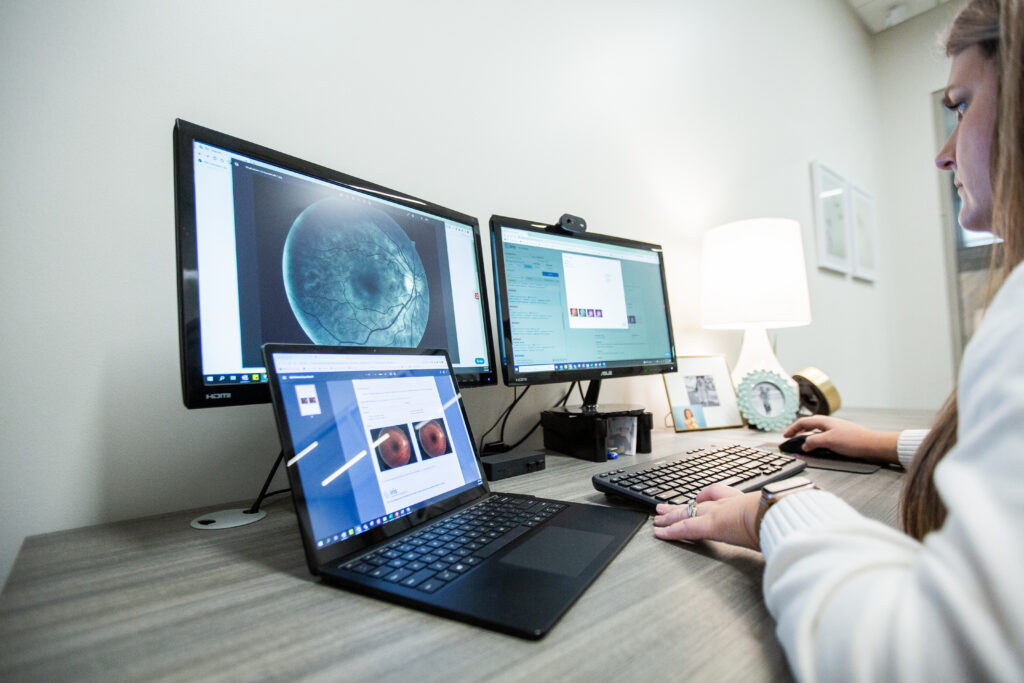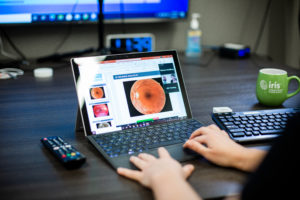What Happens When a Diabetic Eye Exam Result is Not Gradable?

Diabetic retinopathy is a common complication of diabetes that can cause vision loss or blindness if not detected and treated early. Screening for diabetic retinopathy is important because it helps to detect the condition in its early stages when it is most treatable. Early detection allows for prompt treatment to slow or stop the progression of the disease, helping to prevent vision loss or blindness.
Diabetic retinopathy can develop slowly and often has no symptoms in its early stages, which is why regular screening is important for people with diabetes. Screening can also help to monitor changes in a person’s eye health over time and adjust treatment plans accordingly.
Today, many healthcare providers offer diabetic retinopathy evaluations in settings outside of ophthalmology to bring access to screenings closer to patients. In these scenarios, retinal images are captured and transmitted to a provider to review and interpret remotely. Sometimes with remote interpretation, the result of a retinal eye examination is “ungradable.” The cause of an “ungradable” outcome is due to less-than-ideal image quality. The interpreting physician must be able to see key parts of the patient’s anatomy to determine if pathology is or is not present. If the provider is unable to make that determination because parts of the patient’s anatomy are not visible, the screening result will be “ungradable”. Here’s what happens when diabetic eye screenings are not gradable and why it is best to avoid the resulting consequences.

What Happens When a Diabetic Eye Exam is Not Gradable?
When a remotely read diabetic eye exam result is not gradable, it means the grader was not able to clearly view pertinent parts of the patient’s anatomy in the fundus photography. This can occur for several reasons, such as the presence of cataracts, corneal swelling or opacities, media opacities (such as vitreous floaters), or poor pupillary dilation.
If a diabetic eye screening is ungradable, some ordering providers will order a repeat exam, but most will refer the patient to a specialist for a more comprehensive exam.
Why Do Diabetic Eye Exams Sometimes Produce Ungradable Results?
There are several reasons why diabetic eye exams with remote interpretation can have ungradable results:
- Cataracts: Cataracts can cause a cloudy or blurry image of the retina, making it difficult to assess the health of the retina.
- Poor pupil dilation: Pupil dilation is necessary to get a clear view of the retina. If the pupil does not dilate enough, it can result in an ungradable image.
- Poor image quality: Poor image quality can be caused by a variety of factors, including poor image capturing techniques, movement during the image capture, or poor image quality from the imaging device itself.
- Medical conditions: Certain medical conditions, such as macular degeneration or vitreous hemorrhage, can also make it difficult to assess the health of the retina.
If the result of a diabetic retinopathy exam with remote interpretation produces ungradable results, it may be necessary to repeat the exam or try a different imaging technique to get a clearer view of the retina. If a clear view of the retina cannot be obtained, it may be necessary to refer the patient to a specialist for further evaluation.
How Does an Ungradable Result Affect a Patient’s Healthcare?
An ungradable result from a remotely read diabetic eye screening can impact the quality of a patient’s healthcare in several ways:
- Delayed treatment: If diabetic retinopathy or other eye conditions are not detected early, they can progress and lead to more serious complications, such as vision loss or blindness. A delay in treatment can also make it more difficult to manage the condition effectively.
- Increased follow-up exams: If a diabetic eye exam result is not gradable, it may be necessary to repeat the exam or try a different imaging technique. This can increase costs and result in more frequent trips to a healthcare provider for the patient.
For these reasons, it’s important for patients with diabetes to undergo regular eye exams and work closely with their healthcare providers to ensure that their eye health is closely monitored. If the results of a diabetic eye screening are ungradable, it is important to follow up with additional exams or a referral to a specialist to ensure that any eye conditions are detected and treated promptly.
IRIS’s Team of Experts Can Help Reduce Ungradable Eye Exams
For years, IRIS has been working with in-home health evaluation organizations (HRAs), and healthcare providers (HCPs) to improve patient access to retinal eye examinations. Our image-enhancing technology paired with portable fundus cameras make it easier for providers to meet HEDIS measures for diabetic patients by allowing them to offer more accessible options to patients at any stage of their health journey. IRIS works closely with clients to improve image and exam quality for the lifetime of their program.
Our solution is used by organizations such as Prisma Health, St. Elizabeth’s Healthcare, and Gateway Medical. You can check out more of our client’s success stories here, or if you’re interested in trying IRIS yourself in order to close gaps in care, you can reach out to us today to schedule a demo.
FAQ
What are the common causes of ungradable results in diabetic eye exams?
There are several common causes of ungradable results in diabetic eye exams, including poor image quality, limited field of view, cataracts, macular edema, and vitreous hemorrhage.
Can an ungradable diabetic eye exam result lead to gaps in patient care?
Yes, a diabetic eye exam result that is not gradable can lead to gaps in care. An ungradable result means that the healthcare provider was unable to fully evaluate the patient’s retina and identify any signs of diabetic retinopathy, which can compromise the accuracy of a diagnosis and delay treatment.
Why is diabetic retinopathy screening important?
Screening for diabetic retinopathy is important because it helps to detect the condition in its early stages when it is most treatable. Early detection allows for prompt treatment to slow or stop the progression of the disease, helping to prevent vision loss or blindness.
SM#140, Rev A
Get started with IRIS today.
Want to know if IRIS is right for you? Schedule a one-on-one consultation with our team. We’re here to help.